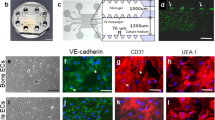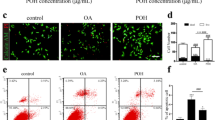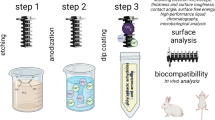Abstract
1. Twelve cases of chronic POA and five cases of acute POA from clinical and radiologic onset were studied in the light of the following parameters: X-rays; lower limb angiographies with venous and arterial blood gas analysis; serial determinations of urine hydroxyproline; urine calcium, serum calcium and phosphorus; creatinephosphokinase; alkaline phosphatase; bone scans; skin temperatures; bone biopsies in evolving POA; light and electron microscopic studies; analysis of amorphous and crystalline components and fluorescent study of ectopic bone marked with tetracycline.
2. The most common localisation of heterotopic ossifications is periarticular; however, it may also be observed at some distance from the skeleton (cases 1 and 16).
3. Onset of POA is accompanied by angiographic modifications showing regression as the POA ages. However, one may not conclude from the persistance of angiographic modifications that the POA is not yet mature. Nor does normalisation of an initially pathological angiogram signify that the maturation of the ectopic bone formation is complete and the POA stabilised.
The angiographic modifications associated with POA are secondary to the POA and not the cause.
4. Arteriovenous blood gas determinations correspond in general to the angiographic modifications and are of no value in judging the degree of maturity of the ectopic bone.
5. The development of POA may be associated with elevated urine Hyp. Normalisation of Hyp levels does not mean that the POA has stabilised; persistance of elevated values does not mean that the POA has not stabilised. Urine Hyp determinations do not permit any conclusion as to the degree of maturity of the POA lesion.
6. Elevation of serum alkaline phosphatase is a sign of the presence of pathologic growing bone, a contra-indication to POA surgery. Normalisation of this enzyme value does not constitute adequate proof of the stabilisation of the osteogenic process.
7. Infrequent isolated determinations of the alkaline phosphatase and of urine Hyp are of practically no value in following the evolution of POA. As for angiographies and bone scans, the dynamic picture produced by serial determinations gives a better idea of the status of the lesion.
8. Elevation of serum CPK suggests a participation of striated muscular tissue in the developing POA mass.
9. Determinations of serum calcium and phosphorus have been of no value in the diagnosis of POA, nor in the evaluation of the maturity of the ectopic mass.
10. In serial bone scans, a decrease in radionuclide uptake over a period of time seems to suggest a slowing of the disease process: an increase signifies active disease, a contraindication to surgery.
11. Multiple foci of osteogenesis of simultaneous onset do not necessarily evolve identically (case 2).
12. Serial bone scans seem to be the most reliable parameter for deciding when a POA is mature and may be operated. Although not constituting absolute proof of stabilisation of the osteogenic process, serial determinations of serum alkaline phosphatase are next in order of reliability.
13. POA may develop without any connection with muscular tissue but, most often, the POA develops in the muscular periphery, deriving from the interfascicular connective tissue, giving rise to a picture seen in some types of myositis ossificans, particularly the post-traumatic type. Histologic studies have shown that atrophic muscular fibres may occasionally be incorporated within the bony mass.
14. Light and electron microscopic examinations of 12 long standing POA (nine hips, two elbows, one knee) and of five recent POA (four hips, one knee) have shown that POA are the result of metaplasic osteogenesis, associated with some chondrogenesis, forming lamellar cortico-spongiosal bone. Therefore, the term ‘calcification’ does not apply to POA and may be abandoned.
15. The study of the ultrastructure and distribution of mineral salts in POA tissue, from early deposition to maturity, has shown that the sequence of transformation involves a progressive increase in the degree of mineralisation with a relative decrease of the amorphous phase and an enlargement in crystal size. After 30 months, the pattern in POA tissue approaches that of normal young adult bone.
16. Injury may certainly be a causative factor in the onset of POA, as shown by cases 2, 4, and 16, but other factors must be considered as well. The role of physiotherapy must be mentioned as a possible aetiologic factor, especially in association with marked spasticity (Hossack & King, 1967). Microscopic interstitial haemorrhages may result from too brisk a mobilisation.
17. If POA do occur more frequently in spastic patients, they may also take place in the absence of any spasticity, as shown by cases 1, 6, and 10.
18. Contrary to the views of Silver (1969), Stryker frames or turning beds, anticoagulant therapy and pressure sores do not appear to play an important role in the onset of POA. Cases 10 and 12 were not associated with any of these factors at any time during their treatment.
19. Eleven POA were resected in seven patients (nine hips, two elbows). There were recurrences in two patients attributed to lack of experience at the time these patients were operated. With the exception of one elbow with a recurrence, all other operated joints enjoyed a significant improvement in articular freedom.
20. This study has produced valuable parameters for the determination of POA maturation allowing for the correct timing of operation with minimal risk of recurrence.
The question of the pathogenesis of POA has been answered only in part, and further study is needed, possibly with the help of bio- and histochemical techniques.
Similar content being viewed by others
Log in or create a free account to read this content
Gain free access to this article, as well as selected content from this journal and more on nature.com
or
References
Alex, R (1959). Les para-ostéo-arthropathies neurogènes. A propos de 16 observations personnelles. Thesis, Lyon.
Armstrong-Ressy, C T, Weiss, A A & Ebel, A (1959). Results of surgical treatment of extraosseous ossification in paraplegia. New York State J. Med., 59, 2548–2553.
Baud, C A & Lee, H S (1969). Etude par diffraction des rayons X de l'incorporation in vivo du carbonate dans la substance minérale osseuse. C. R. Acad. Sc. Paris, D268, 2956–2957.
Bénassy, J & Combelles, Fr (1971). Ostéomes. Tentatives thérapeutiques. Ann. Méd. Phys, Paris, 14, 467–475.
Bénassy, J, Boissier, J R, Patte, D & Diverres, J Cl (1960). Ostéomes des paraplégiques (Contribution à l'étude de l'ossification neurogène). Presse Médicale, 68, 811–814.
Bénassy, J, Mazabraud, A & Diverres, J (1963). L'ostéogénèse neurogène. Rev. Chir. Orthop. 49, 95–116.
Bernard, Cl (1859). Leçons sur les propriétés physiologiques et les altérations pathologiques des liquides de l'organisme. Vol. I. Douzième et treizième leçons, 266–294, Paris: J. B. Baillière.
Bétoulières, A (1962). Les ossifications para-articulaires neurogènes (O.P.N.). Presse Médicale, 70, 194–196.
Bidart, Y & Maury, M (1970). Les para-ostéo-arthropathies. Etat actuel du problème. Presse Médicale, 78, 2245–2248.
Chantraine, A (1971). Clinical investigation of bone metabolism in spinal cord lesions. Int. J. Paraplegia, 8, 253–259.
Chantraine, A (In press). Aspects cliniques et biologiques des para-ostéo-arthropathies. J. Rhumatol. et Méd. Phys.
Couvée, L M J (1971). Heterotopic ossification and the surgical treatment of serious contractures. Int. J. Paraplegia, 9, 89–93.
Damanski, M (1961). Heterotopic ossification in paraplegia. A clinical study. J. Bone Jt. Surg. 43B, 286–299.
DéJerine & Ceillier, A (1918). Para-ostéo-arthropathies des paraplégiques par lésion médullaire (Etude clinique et radiographique). Ann. Méd. 5, 497–535.
DéJerine, Ceillier A & DéJerine, Yv (1919). Para-ostéo-arthropathies des paraplégiques par lésion médullaire. Etude anatomique et histologique. Rev. Neurol. No. 5, 399–407.
Faubel, W (1961). Neurotrophische Gelenkveränderungen bei Querschnittsgelähmten. Verhandl. dtsch. Orthop. Ges. 49, 376–380.
Freehafer, A A, Yurick, R & Mast, W A (1966). Para-articular ossification in spinal cord injury. Med. J. Serv., Canada, 22, 471–477.
Furman, R, Nicholas, J J & Jivoff, L (1970). Elevation of the serum alkaline phosphatase coincident with ectopic-bone formation in paraplegic patients. J. Bone Jt. Surg., 52A, 1131–1137.
Galibert, P, Fossati, P, Lopez, C, Cecile, J P, Bonte, G, Decoulx, P & Laine, E (1961). Etude angiographique de la circulation des membres inférieurs aux différents stades évolutifs d'une paraplégie. Neuro-Chir. 7, 181–201.
Grant, R T (1929-1931). Observations on direct communications between arteries and veins in the rabbit ear. Heart, 15, 281–303.
Grogono, (1966). Discussion of the article ‘Para-articular ossification in spinal cord injury’. Pp. 478. See ref. Freehafer et al.
Grueter, H & Busack, E (1962). Beitrag zur Problematik von Amputationen bei Querschnittsgelähmten. Arch. Orthop. Unfall-Chir. 54, 295–300.
Hardy, A G & Dickson, J W (1963). Pathological ossification in traumatic paraplegia. J. Bone Jt. Surg. 45B, 76–87.
Hossack, D W & King, A (1967). Neurogenic heterotopic ossification. Med. J. Australia, 1, 326–328.
Hutcheson, J, Klatte, E C & Kremp, R (1972). The angiographic appearance of myositis ossificans circumscripta. A case report. Radiology, 102, 57–58.
Jeannopoulos, C L & Leventen, E O (1961). Unusual bilateral para-articular ossification of the elbows. J. Bone Jt. Surg. 43A, 876–880.
Jowsey, J (1964). Variations in bone mineralisation with age and disease. In: Bone Biodynamics. Ed. H. M. Frost. Pp. 461–479. Boston: Little Brown.
Kärcher, K H (1972). Personal communication.
Kief, W, Klein, B & Möller, E (1972). Enzymbewegungen unter körperlicher Belastung bei trainierten und untrainierten Probanden. Med. Klin. 67, 195–199.
Klein, L, Van Den Noort, S & Dejak, J J (1966). Sequential studies of urinary hydroxyproline and serum alkaline phosphatase in acute paraplegia. Med. J. Serv., Canada, 22, 524–533.
Lejeune, E, Meunier, P, Ruitton, P & Orgiazzi, J (1972). L'hydroxyprolinurie confrontée aux données histologiques osseuses quantitatives. Essai d'interprétation physiopathologique. Rev. Rhumat., 39, 107–113.
Limbers, P A & Donnan, S (1970). Widespread ectopic ossification following head injury. Med. J. Australia, 2, 540–541.
Lopez, E, Lee, H S & Baud, C A (1970). Etude histophysique de l'os d'un Téléostéen, Anguilla anguilla L., au cours d'une hypercalcémie provoquée par la maturation expérimentale. C. R. Acad. Sc., Paris, D270, 2015–2017.
Mead, S, Cain, H D, Kelly, R E & Liebgold, H (1963). Periarticular calcification in paraplegics: attempted treatment with disodium edetate. Int. J. Paraplegia, 1, 62–68.
Michaelis, L S (1964). Orthopaedic surgery of the limbs in paraplegia, pp. 30–33. Berlin: Springer.
Miller, L F & O'Neill, C J (1949). Myositis ossificans in paraplegics. J. Bone Jt. Surg. 31A, 283–294.
Muheim, G, Donath, A & Rossier, A B (in press). Serial scintigraphies in the course of ectopic-bone formation in paraplegic patients. Am. J. Roentgenol. (unpublished).
Nechwatal, E (1972). Die Vermeidung heterotoper Ossifikationen—ein zentrales Problem bei der Frühbehandlung von Querschnittgelähmten. Z. Orthop. 110, 590–596.
Posner, A S, Eanes, E D, Harper, R A & Zipkin, I (1963). X-ray diffraction analysis of the effect of fluoride on human bone apatite. Arch. oral Biol. 8, 549–570.
Radt, P (1970). Periarticular ectopic ossification in hemiplegics. Geriatrics, 25, 142–157.
Recordier, A M, Mouren, P & Serratrice, G (1961). Les para-ostéo-arthropathies neurogènes. In: les ostéo-arthropathies nerveuses, pp. 117–127, Paris: Expansion Scientifique Française.
Rossier, A B, Zender, R, Baquiche, M, Bahri, M & Courvoisier, B (1972). Unpublished data.
RouquèS, L, George & Huard (1954). Une pièce de para-ostéoarthropathie type Dejerine-Ceillier. Rev. Neurol. 90, 233.
Shifrin, L Z (1970). Correlation of serum alkaline phosphatase with bone formation rates. Clin. Orthop. and Rel. Res. No. 70, 212–215.
Silver, J R (1969). Heterotopic ossification. A clinical study of its possible relationship to trauma. Int. J. Paraplegia, 7, 220–230.
Welch, K M A & Goldberg, D M (1972). Serum creatine phosphokinase in motor neuron disease. Neurology, 22, 697–701.
Zender, R (1972). Analyse de l'hydroxyproline urinaire. Méthode et valeurs fréquentes. Clin. Chim. Acta, 37, 263–269.
Author information
Authors and Affiliations
Rights and permissions
About this article
Cite this article
Rossier, A., Bussat, P., Infante, F. et al. Current facts on para-osteo-arthropathy (POA). Spinal Cord 11, 36–78 (1973). https://doi.org/10.1038/sc.1973.5
Issue date:
DOI: https://doi.org/10.1038/sc.1973.5
This article is cited by
-
Pelvic heterotopic ossification: when CT comes to the aid of MR imaging
Insights into Imaging (2013)
-
Heterotope Ossifikationen bei Querschnittl�hmung
Der Orthop�de (2005)
-
Nodular osteochondrogenic activity in soft tissue surrounding osteoma in neurogenic para osteo-arthropathy: morphological and immunohistochemical study
BMC Musculoskeletal Disorders (2004)
-
Heterotopic ossification: Clinical and cellular aspects
Calcified Tissue International (1991)



